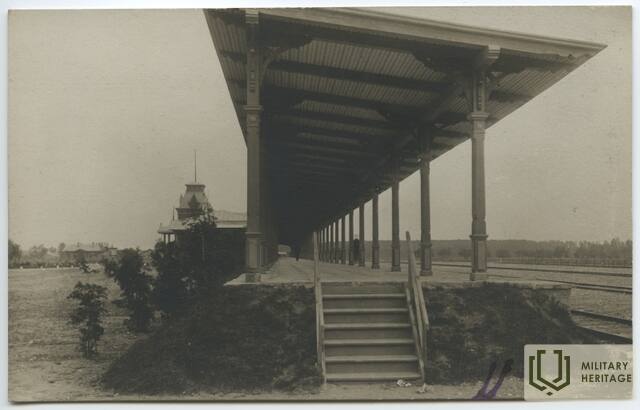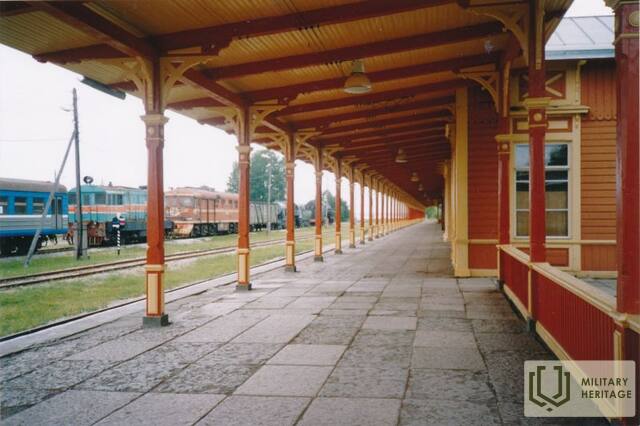Hapsalu geležinkelių ir susisiekimo muziejus
Muziejus

Šis muziejus įsikūręs XX a. pradžioje pastatytoje geležinkelio stotyje, jungiančioje su Hapsalu kurortu.
1997 m. atidarytas muziejus pristato pusantro amžiaus Estijos geležinkelių ir komunikacijos priemonių raidą. Be nebenaudojamų lokomotyvų, muziejuje eksponuojamas malonus stoties viršininkas ir „Ericsson Skeleton Type“ telefonas, o lankytojai kviečiami į stoties paštą.
Lauko parodoje taip pat eksponuojamas Antrojo pasaulinio karo garvežys 52 3368.
Garvežys Nr. 52 3368, iš pradžių pažymėtas numeriu 16494, buvo baigtas gaminti 1943 m. balandžio mėn. Miunchene, Krauss-Maffei gamykloje, o vėliau perkeltas į Austriją, Filacho divizijos Bruck an der Mur depo. Vengrijos valstybiniai geležinkeliai (MAV) išsinuomojo lokomotyvą, o 1945 m. birželio 7 d. jį užgrobė Raudonoji armija. Pasikeitus Vengrijos ir Rumunijos sienai, lokomotyvas Nr. 52 3368 buvo perduotas Rumunijos geležinkeliui (CFR). 1950 m. rugpjūtį CFR Jasų gamykloje lokomotyvas buvo perdarytas į plačiojo geležinkelio (5 pėdų) ir perduotas Sovietų Sąjungai, kur nuo 1950 m. spalio iki 1956 m. dirbo Odesos geležinkelio Kotovsko ir Vapniarkos depe. Po to SSRS susisiekimo ministerija jį laikė strateginiame rezerve. 1957 m. rugpjūčio 26 d. į Valgos lokomotyvų bazę atvyko garvežys TE-3368 (ТЭ-3368, 52 klasės garvežys 1952 m. buvo pervadintas į TE). Ten garvežys gavo kitą tenderį (vadinamąjį „Wannentender“), 1943 m. pagamintą „Borsig Works“ gamykloje Berlyne ir anksčiau priklausiusį garvežiui TE-450. Jis galėjo gabenti 32 m3 vandens ir 10 tonų kuro. Garvežys Valgoje (nuo 1961 iki 1968 m. trumpai – Tartu) stovėjo iki bazės uždarymo 1997 m. Nuo 1950 iki 1985 m. jo, kaip plačiojo geležinkelio lokomotyvo, rida buvo 463 216 km. 1998 m. gegužės 8 d. garvežys buvo pristatytas į Hapsalu, kad būtų eksponuojamas Geležinkelio muziejuje.
52 klasės karo lokomotyvas buvo skubiai suprojektuotas 1942 m. birželį Reicho ginkluotės ir karo gamybos ministerijos prašymu, remiantis 50 klasės lokomotyvo pavyzdžiu. 2-10-0 tipo variklis turėjo apie 1500 AG galią ir maksimalų 80 km/h greitį. Jis turėjo supaprastintą ir lengvą konstrukciją (15 tonų ašies apkrova), o numatytas eksploatavimo laikas buvo 5 metai. Nuo 1942 iki 1945 m. 14 gamyklų visoje Europoje buvo pagaminta iš viso 6295 šios klasės lokomotyvai. Po Antrojo pasaulinio karo 52 klasės lokomotyvai paplito po visą Europą – nuo Norvegijos iki Turkijos ir nuo Belgijos iki Sovietų Sąjungos. SSRS buvo daugiau nei 2000 lokomotyvų – tikslus skaičius nežinomas, nes lokomotyvai buvo pavaldūs įvairioms institucijoms, įskaitant saugumo tarnybas. Estijoje 52 klasės garo lokomotyvai standartinio vėžės (1435 mm) linijomis pirmą kartą pradėjo važiuoti 1943–1944 m. Nuo 1953 m., kai Estijos krovininiame eisme jie pakeitė amerikietiškus ŠA klasės karo lokomotyvus („Sharik“), čia buvo 138 TE (52) klasės pakeisto gabarito lokomotyvai. Iki 1991 m. Estijoje buvo likęs tik vienas – TE-3368.































